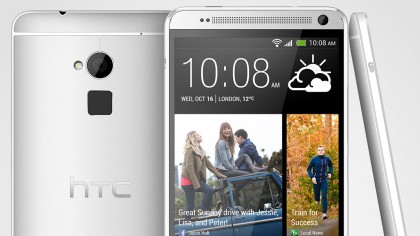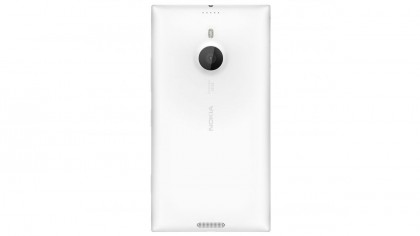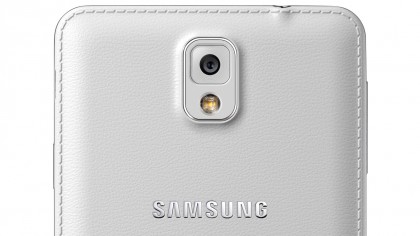Nokia Lumia 1520 vs Sony Xperia Z Ultra vs HTC One Max vs Samsung Galaxy Note 3
Battle of the phablets
The HTC One Max has an even more premium design. In fact it's identical to the design of the HTC One.

We're talking silver aluminium front and back with an attractively curved shape. Its dimensions of 164.5 x 82.5 x 10.3mm lie somewhere between the Xperia Z Ultra and the Lumia 1520, except for the thickness, as the HTC One Max is pretty chunky in that regard.
Its weight of 217g is marginally higher than the Sony Xperia Z Ultra, but given the metal construction that's not a surprise - it does make it really heavy though.
That brings us to the Samsung Galaxy Note 3, which at 151.2 x 79.2mm makes it shorter and thinner than any of its competitors, though at 8.3mm thick it's not as slim as the Sony Xperia Z Ultra and at 168g it's tied with the Nokia Lumia 1520 for lowest weight.
Its plastic construction isn't much to write home about, but its faux leather back at least gives it a hint of class and it comes in black, white and pink.
Camera
Like most Lumia phones the Nokia Lumia 1520 puts a lot of focus on the camera, though at 20MP it's a step down from the 41MP Nokia Lumia 1020.
That's still pretty impressive though and its Carl Zeiss lens should ensure that it takes sharp pictures with strong colour reproduction. Given Nokia's pedigree it's also likely to fare well in low light conditions.
Get daily insight, inspiration and deals in your inbox
Sign up for breaking news, reviews, opinion, top tech deals, and more.

It can also shoot 1080p video at 30fps and has a 1.2MP front facing camera.
The Sony Xperia Z Ultra has an 8MP camera, which is a megapixel count that's starting to feel a bit mid range, but it can still shoot 1080p video at 30fps and has a 2MP front facing camera.
The HTC One Max uses the same Ultrapixel camera technology as the HTC One for its 4MP camera, which means that while the megapixel count might be low it lets a lot of light in for more detailed images. It can also shoot 1080p video at 30fps and has a 2.1MP front facing camera.

The Samsung Galaxy Note 3 has a 13MP snapper which can take some pretty impressive photos but is unlikely to match up to the Nokia Lumia 1520. It can also shoot 1080p video at 60fps or 4K video at 30fps and has a 2MP front facing camera.
Ultimately the Nokia Lumia 1520 is likely to win out in the camera stakes, but the Samsung Galaxy Note 3 is hard to beat for video thanks to its 4K credentials and 60fps for 1080p footage.
Storage
The Nokia Lumia 1520 has 32GB of built in storage along with a microSD slot to further expand that, which is a nice addition as most high end Lumia handsets don't support microSD cards.
The Sony Xperia Z Ultra has just 16GB of built in storage, but also has a microSD card slot. The HTC One Max has a choice of 16 or 32GB of built in storage along with a micro SD card slot and the Samsung Galaxy Note 3 comes with 16, 32 or 64GB of built in storage plus a microSD card slot.
So the Galaxy Note 3 has the most potential storage, while the Sony Xperia Z Ultra has the least, but thanks to microSD card support none of them are likely to run low in a hurry.
Battery life
Battery life has always been the bane of smartphones and though manufacturers are ever increasing the size of their phones batteries, the increase in power and screen size that tends to go with it means that the life still isn't normally great.
The Nokia Lumia 1520 at least looks set to be one of the better phones for battery life, thanks to a rather large 3400mAh battery on board, which Nokia claims is capable of 25 hours talk time.
James is a freelance phones, tablets and wearables writer and sub-editor at TechRadar. He has a love for everything ‘smart’, from watches to lights, and can often be found arguing with AI assistants or drowning in the latest apps. James also contributes to 3G.co.uk, 4G.co.uk and 5G.co.uk and has written for T3, Digital Camera World, Clarity Media and others, with work on the web, in print and on TV.